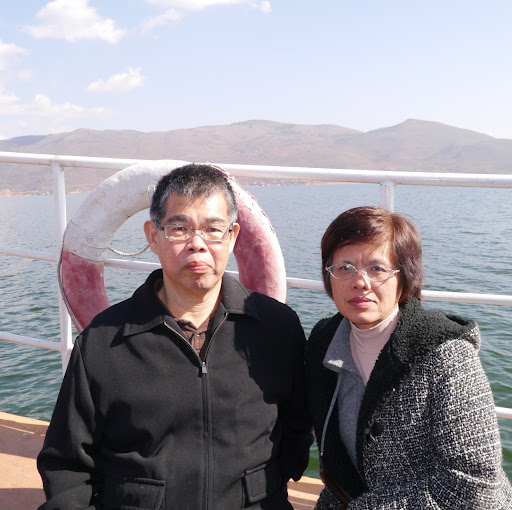Bing Wang
age ~55
from Princeton Junction, NJ
Bing Wang Phones & Addresses
- Princeton Junction, NJ
- Kingston, NJ
- Snellville, GA
- Atlanta, GA
- Boulder, CO
- Newtonville, MA
- Cambridge, MA
- 1145 Liberty Pkwy NW, Atlanta, GA 30318
Work
-
Company:Environmental protection agency2014
-
Position:Research assistant
Education
-
School / High School:New Jersey Institute of Technology- Newark, NJ2010
-
Specialities:PhD in Chemical Engineering
Skills
ANSYS-FLUENT & GAMBIT • AUTOCAD • SOLIDWORKS • ASPEN • FLOW 3D • FORTRAN • C++ • MATLAB • Tecplot • MS-Office; VOF model with Moving Mesh an... • 3-D SRF model • 3-D MRF model and Quasi - Single Phase M...
Ranks
-
Licence:Illinois - Active And Authorized To Practice Law
-
Date:1994
Images
Emails
Real Estate Brokers

Bing Wang, New York Agent
view sourceWork:
East Coast Realtors Inc.
(646)6204856 (Phone)
(646)6204856 (Phone)
Lawyers & Attorneys

Bing Wang - Lawyer
view sourceAddress:
(106)5058719 (Office)
Licenses:
Illinois - Active And Authorized To Practice Law 1994

Bing Wang - Lawyer
view sourceOffice:
Jingtian & Gongcheng
ISLN:
920590957
University:
Lunds University, 2004; Peking University School of Law, 1999

Bing Wang - Lawyer
view sourceSpecialties:
China Trade and Investment
Telecommunications
Telecommunications
ISLN:
909641144
Admitted:
1994
University:
Beijing University, B.A., 1984; Beijing University, B.A., 1984; Beijing University, B.A., 1984; Beijing University, M.A.; Beijing University, M.A.; Beijing University, M.A.
Law School:
University of Maine, J.D., 1994
Isbn (Books And Publications)

License Records
Bing Wang
License #:
E-7432 - Expired
Category:
Engineering Intern
Bing Wang
License #:
E117811 - Active
Category:
Emergency medical services
Issued Date:
Apr 11, 2015
Expiration Date:
Nov 30, 2017
Type:
Los Angeles County EMS Agency
Name / Title
Company / Classification
Phones & Addresses
CEO
Bw Ldt.
Newspapers: Publishing, or Publishing and Pri...
Newspapers: Publishing, or Publishing and Pri...
11 Milfrd St, Boston, MA 02118
Managing
Paratech International LLC
Technology Provide Complete Environment
Technology Provide Complete Environment
Secretary
FORTUNE FAITH FINANCIAL SERVICE INC
5725 Buford Hwy Ste117, Atlanta, GA 30340
5365 Williams Rd, Norcross, GA 30093
5365 Williams Rd, Norcross, GA 30093
Yifang Digital (Hong Kong) Company Limited, LLC
Electronic Sales
Electronic Sales
Principal
ORIENTAL MASSAGE THERAPY INC
Misc Personal Services
Misc Personal Services
2635 Sandy Pln Rd, Marietta, GA 30066
(770)5657878
(770)5657878
Director, President, Secretary, Treasurer
China Travel Resort Holdings, Inc
Us Patents
-
Toad Having Enhanced Extinction Ratio Of The Switching Window
view source -
US Patent:6535662, Mar 18, 2003
-
Filed:Mar 9, 2001
-
Appl. No.:09/802767
-
Inventors:Paul R. Prucnal - Princeton NJ
Ivan Glesk - Princeton NJ
Robert Runser - Aberdeen NJ
Christine Coldwell - Columbia MD
Bing C. Wang - Alhambra CA -
Assignee:The Trustees of Princeton University - Princeton NJ
-
International Classification:G02B 626
-
US Classification:385 16, 385 15, 385 18, 385122, 385 39, 385 42, 385 45, 385 46, 356345, 359115, 359117, 359124, 359128
-
Abstract:A Terahertz Optical Asymmetric Demultiplexer (TOAD) having preferably two non-linear elements (NLES) in which the extinction ratio is enhanced by saturating both NLEs when closing a switching window. A data signal input on one port of the TOAD is split onto two optical paths, each including one NLE. The optical paths converge at an output port. To start a switching window, a first control signal is input on an optical path that includes only one of the two NLEs. To close a switching window, one or more control signals are input such that both NLEs receive a control signal at a predetermined time after the first control signal is received by one of the NLEs. Only data signals passing through the first NLE during the switching window are output on the output port. Since both NLEs receive a second control signal at the same time, they decay together and thus avoid creation of unintended switching windows. Additionally, in certain embodiments of the present invention, the second control signal can be input on the data port or the output port, eliminating the need for a separate port for the second control signal as required by certain known TOADs.
-
All-Optical, 3R Regeneration Using The Sagnac And Mach-Zehnder Versions Of The Terahertz Optical Asymmetric Demultiplexer (Toad)
view source -
US Patent:7035550, Apr 25, 2006
-
Filed:Dec 10, 2003
-
Appl. No.:10/732171
-
Inventors:Paul R. Prucnal - Princeton NJ, US
Bing C. Wang - Mansfield Center CT, US -
Assignee:The Trustees of Princeton University - Princeton NJ
-
International Classification:H04B 10/20
-
US Classification:398175
-
Abstract:A system and method for regenerating optical signals comprising a clock recovery circuit coupled to a transmission line, a first optical gating device having an input port coupled to the transmission line and a clock port coupled to the clock recovery circuit, and a second optical gating device having an input port coupled to a continuous wave (CW) laser and a clock port coupled to the output of the first optical gating device, wherein the optical gating devices may be terahertz optical asymmetric demultiplexers (TOADs).
-
Chunk-Based Filtering To Optimize Video Streaming Quality And Data Usage
view source -
US Patent:20210067819, Mar 4, 2021
-
Filed:Sep 4, 2019
-
Appl. No.:16/560721
-
Inventors:- Atlanta GA, US
Shuai Hao - Hillsborough NJ, US
Yanyuan Qin - Tolland CT, US
Bing Wang - Storrs Mansfield CT, US
Krishna R. Pattipati - Storrs CT, US -
International Classification:H04N 21/234
H04N 21/2662
H04N 21/231
H04N 21/236
H04N 21/24
H04L 29/06 -
Abstract:A processing system including at least one processor may obtain a selection of a desired perceptual quality for a video and selects a first video chunk from among a first plurality of video chunks, wherein the first plurality of video chunks is associated with a first time block of the video, wherein the selecting is based upon a manifest file of the video, wherein each video chunk of the first plurality of video chunks is associated with a respective perceptual quality and a respective encoding bitrate, wherein the first video chunk is part of a subset of the first plurality of video chunks for which the respective perceptual quality matches the desired perceptual quality within a predefined threshold tolerance, and wherein the respective encoding bitrate of the first video chunk is lower than a highest encoding bitrate associated with the subset of the first plurality of video chunks. The processing system may obtain the first video chunk from a server and store the first video chunk in a buffer.
-
Methods For Quantifying Drug Concentration In A Prodrug Composition
view source -
US Patent:20200386768, Dec 10, 2020
-
Filed:May 6, 2020
-
Appl. No.:16/867655
-
Inventors:- Cambridge NJ, US
Bing Wang - Bridgewater NJ, US -
International Classification:G01N 33/68
G01N 33/15
C07K 1/20 -
Abstract:Methods for quantifying the amount of drug present in a prodrug composition are provided.
-
Methods For Characterizing Compositions Comprising Peanut Antigens
view source -
US Patent:20200116732, Apr 16, 2020
-
Filed:Sep 24, 2019
-
Appl. No.:16/580638
-
Inventors:- Paris, FR
Pierre deMontigny - Bridgewater NJ, US
Bing Huang Wang - Bridgewater NJ, US -
International Classification:G01N 33/68
-
Abstract:Methods for determining an in vitro release profile of peanut allergens in a sample are provided. Methods for determining one or more signatures of peanut allergens in a sample are provided.
-
Apparatus, Storage Medium And Method For Adaptive Bitrate Streaming Adaptation Of Variable Bitrate Encodings
view source -
US Patent:20200067852, Feb 27, 2020
-
Filed:Aug 21, 2018
-
Appl. No.:16/107550
-
Inventors:- Atlanta GA, US
Shuai Hao - Hillsborough NJ, US
Yanyuan Qin - Mansfield CT, US
Bing Wang - Storrs Mansfield CT, US
Krishna R. Pattipati - Storrs CT, US -
Assignee:AT&T Intellectual Property I, L.P. - Atlanta GA
University of Connecticut - Storrs CT -
International Classification:H04L 12/861
H04L 29/06 -
Abstract:Aspects of the subject disclosure may include, for example, communicating with a source of streaming media, wherein the streaming media is variable bitrate encoded, wherein the streaming media comprises a first plurality of chunks, wherein each of the first plurality of chunks corresponds to a first portion of the streaming media, wherein the streaming media comprises a second plurality of chunks, wherein each of the second plurality of chunks corresponds to a second portion of the streaming media, wherein the streaming media comprises a third plurality of chunks, and wherein each of the third plurality of chunks corresponds to a third portion of the streaming media; obtaining, from the source, a first one of the first plurality of chunks; and determining which of the second plurality of chunks and third plurality of chunks to obtain. Other embodiments are disclosed.
-
Methods, Systems, And Devices For Video Streaming Adaptation Using Control Theoretic Approach
view source -
US Patent:20180309809, Oct 25, 2018
-
Filed:Apr 25, 2017
-
Appl. No.:15/496233
-
Inventors:- Atlanta GA, US
Shuai HAO - Hillsborough NJ, US
Yanyuan QIN - Storrs Mansfield CT, US
Ruofan JIN - San Jose CA, US
Krishna R. PATTIPATI - Storrs CT, US
Bing WANG - Storrs Mansfield CT, US -
International Classification:H04L 29/06
H04L 12/26
H04N 21/44 -
Abstract:Aspects of the subject disclosure may include, for example, embodiments include obtaining a first estimated bandwidth capacity of a communication network and selecting a target buffer level to temporarily store media content. Further embodiments include requesting a first portion of the media content according to the first estimated bandwidth capacity and the target buffer level and receiving the first portion of the media content. Additional embodiments include determining a current buffer level and receiving a second estimated bandwidth capacity of the communication network. Also, embodiments include requesting a second portion of the media content according to the current buffer level and the second estimated bandwidth capacity. Other embodiments are disclosed.
-
Methods For Characterizing Compositions Comprising Peanut Antigens
view source -
US Patent:20170219600, Aug 3, 2017
-
Filed:Dec 28, 2016
-
Appl. No.:15/392233
-
Inventors:- Paris, FR
Pierre deMontigny - Bridgewater NJ, US
Bing Huang Wang - Bridgewater NJ, US -
International Classification:G01N 33/68
-
Abstract:Methods for determining an in vitro release profile of peanut allergens in a sample are provided. Methods for determining one or more signatures of peanut allergens in a sample are provided.
Medicine Doctors

Bing Wang
view source
Bing Wang
view sourceResumes

Bing Wang Newark, NJ
view sourceWork:
Environmental Protection Agency
2014 to 2000
Research Assistant Merck Company
2013 to 2014
Research Assistant Chemical Engineering Department of NJIT
2012 to 2014
Lecturer in Chemical Engineering Department of NJIT Merck Company
2011 to 2013
Research Assistant State Key Laboratory of Tianjin University
2008 to 2010
Research Assistant
2014 to 2000
Research Assistant Merck Company
2013 to 2014
Research Assistant Chemical Engineering Department of NJIT
2012 to 2014
Lecturer in Chemical Engineering Department of NJIT Merck Company
2011 to 2013
Research Assistant State Key Laboratory of Tianjin University
2008 to 2010
Research Assistant
Education:
New Jersey Institute of Technology
Newark, NJ
2010 to 2015
PhD in Chemical Engineering Tianjin University
Jun 2010
M.E. Chemical Engineering Tianjin University
Jun 2004
B.S. in Applied Chemistry
Newark, NJ
2010 to 2015
PhD in Chemical Engineering Tianjin University
Jun 2010
M.E. Chemical Engineering Tianjin University
Jun 2004
B.S. in Applied Chemistry
Skills:
ANSYS-FLUENT & GAMBIT, AUTOCAD, SOLIDWORKS, ASPEN, FLOW 3D, FORTRAN, C++, MATLAB, Tecplot, MS-Office; VOF model with Moving Mesh and also writing UDF, 3-D SRF model, 3-D MRF model and Quasi - Single Phase Model with UDF
Googleplus

Bing Wang
Work:
George Washington University - Research Scientist (2012)
University of Maryland - Research Associate (2011-2012)
University of Maryland - Research Associate (2011-2012)
Education:
Iowa State University

Bing Wang
Education:
State University of New York at Stony Brook - AMS, Zhejiang University - Mathematics and Applied Mathematics

Bing Wang
Education:
New York University - Dentistry, University of Toronto - Life Science

Bing Wang
Education:
THU - EE

Bing Wang
Education:
Stony Brook University - COMPUTER SCIENCE

Bing Wang
Work:
Fairchild Semiconductor International, Inc. - Test Engineer

Bing Wang

Bing Wang
Flickr
Plaxo

Wang Bing (Linda)
view sourceHK

bing wang
view source西飞公司
Youtube

Bing Wang
view source
Bing Wei Wang
view source
Zhi Bing Wang
view source
Wang Bing
view source
Tai Bing Wang
view source
Yi Bing Wang
view source
Bing Wang
view source
Bing Mi Wang
view sourceGet Report for Bing Wang from Princeton Junction, NJ, age ~55













